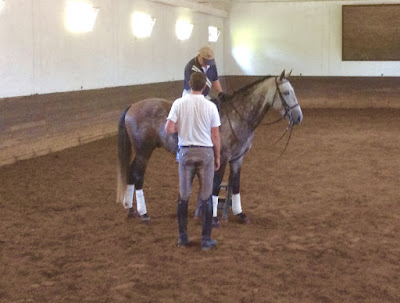It's been a stellar year here at Catskill Horse magazine and it is thanks to many folks chipping in, contributing and supporting the core efforts of The Merry Band at The Catskill Horse. We thank each and every one of you!
It's been a great 11 years thus far, and we have a wealth of new plans for 2024 thanks to all the feedback everyone kindly gave to our recent survey.
The continuation of the publication in a new format along with keeping the magazine free from a paid subscription model is planned, and work has already begun with our IT volunteer and publisher Paul Alvin-Smith taking the reins on the graphic design and layout. There will be a subscription option added where users will be invited to join the 'official' readership list , but no pay wall will be instigated.
Readers can expect a more user-friendly experience, matched with video driven content, great copy with plenty of training advice for horse folks and more travel inspired adventures. Several new writers have joined The Merry Band and a new diversity to content will be the result. In addition to the mainstay equestrian focus, new spin-off columns and media platforms on rural lifestyle, including hunting and hunting guide coverage to both field and stream; homestead advice and insights with rural property development advice for farm, agritourism, garden and sustainable living including off-grid living, log homes and small houses; plus livestock and pet corner are also in the works.
Advertisers continue to report great metrics on their analytics that showcase the value of the organic SEO boost from the .org status of Catskill Horse and the high number of repeat viewers that are loyal to the brand, with good sharing across the social media platforms reaching an ever increasing number of readers. The demographic audience is trending lower in age, and the advent of the new magazine layout and update will doubtless help develop this trend further.
Micro-influencing through the various PR routes and distribution media channels offer a myriad of opportunities to snag new viewership. The micro-influencer channels are not huge but importantly are very well targeted and thus productive. It is expected that the reach of the magazine will continue its upward spiral as new social media platforms will be announced in early summer. New partnerships will be announced in particular with professional film production on video routes.
Social teaming will also be available to select advertisers with differentiated markets honored to ensure no conflict between brands. The advice of noted mentors, including Barbara Corcoran, has been brought front and center through liaison with certain loyal magazine readers who worked directly under her tutoring and have kindly gifted their access and expertise. This is an aspect we are very excited to be bringing to the table, as we expect the returns to be significant.
Our free help to 501(c)3 registered charities will continue and be further developed as we continue Catskill Horse mission to make the world a better place for all to enjoy.
The aim of the magazine is as always, to bring a super, fun, and useful resource to as many horse trainers/owners, country lifestyle loving folks and cookery and travel aficionados as possible. The magazine continues to expand well beyond the North-East U.S.A., in parallel with the breadth of interests readership has reported. We will continue to add staff to the writing team to broaden the expertise across these topics to meet the demand.
There is also a likely mid-July launch of an exciting rebrand of a specialist canine/pet publication, pending some ongoing negotiations for an acquisition of an existing well-respected publication. We will keep you posted!
So that's the update for now. Please stay tuned for additional news!
Happy 2024!
Your Editor,
Nikki Alvin-Smith
 |
| Nikki Alvin-Smith |








































